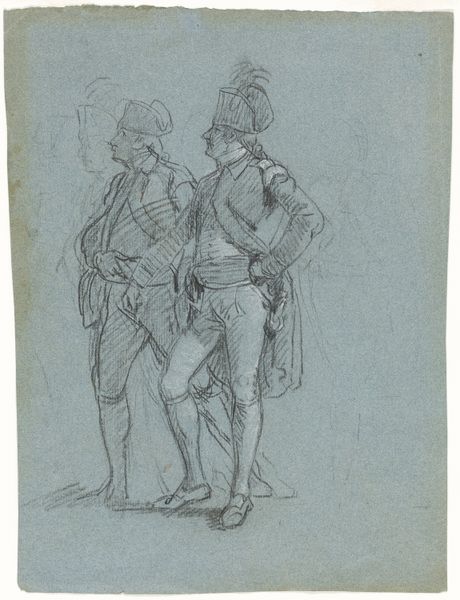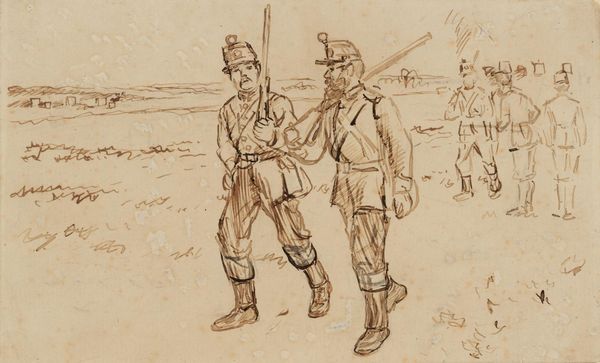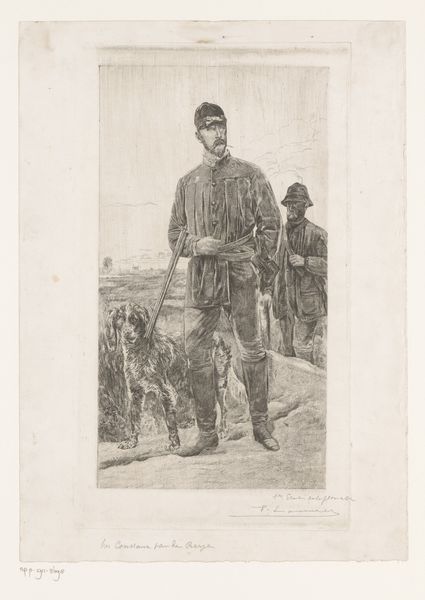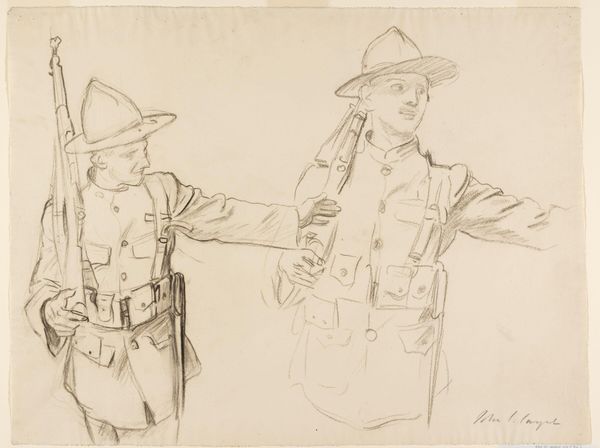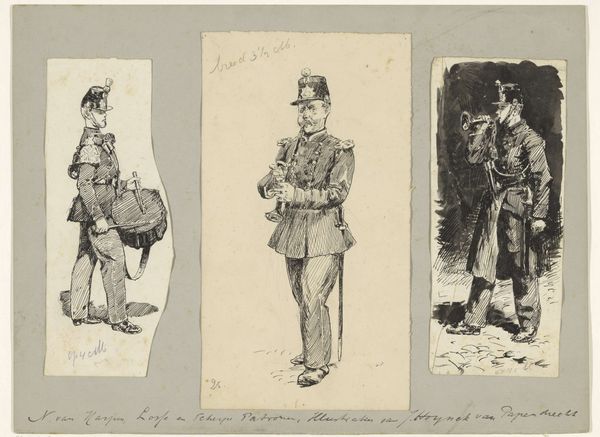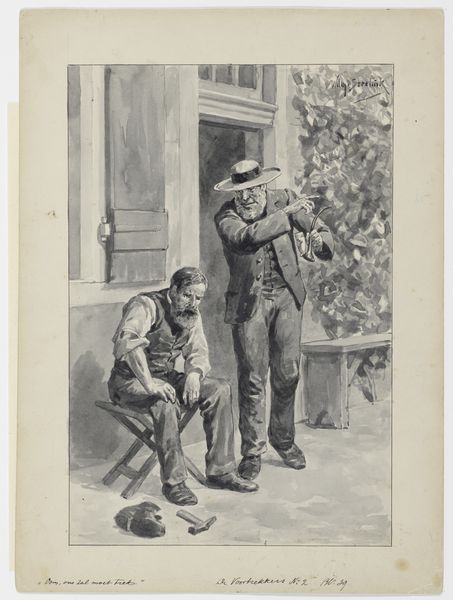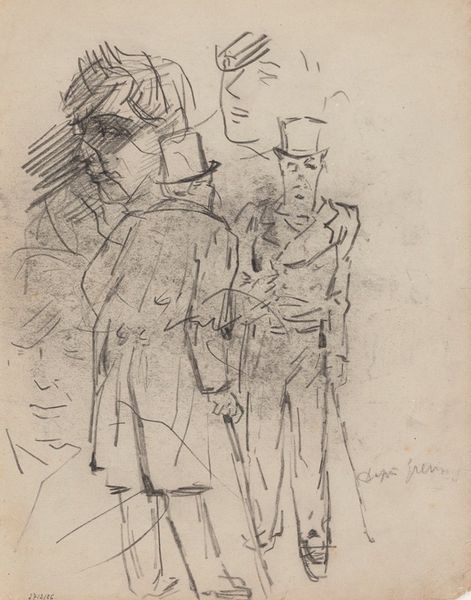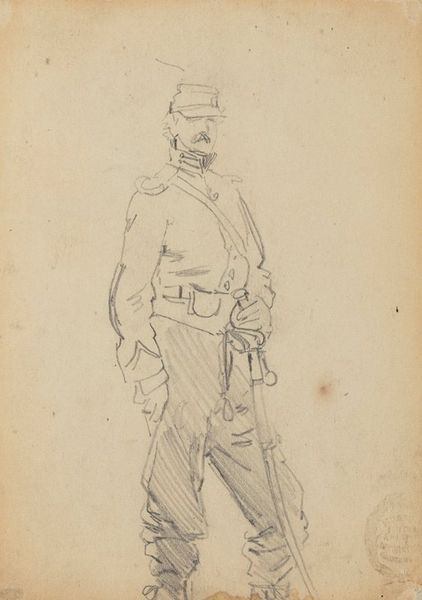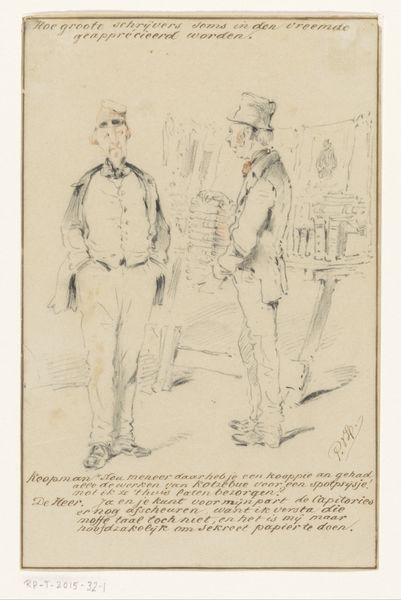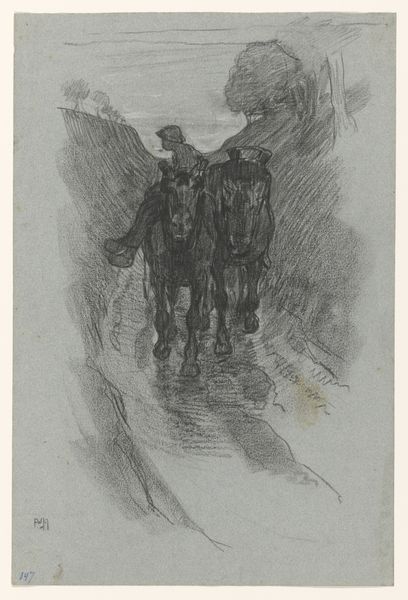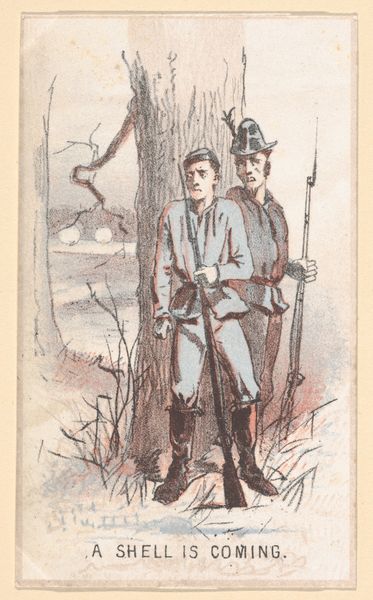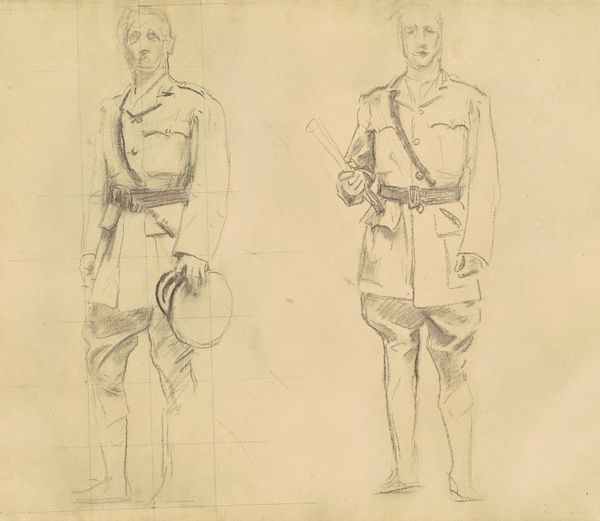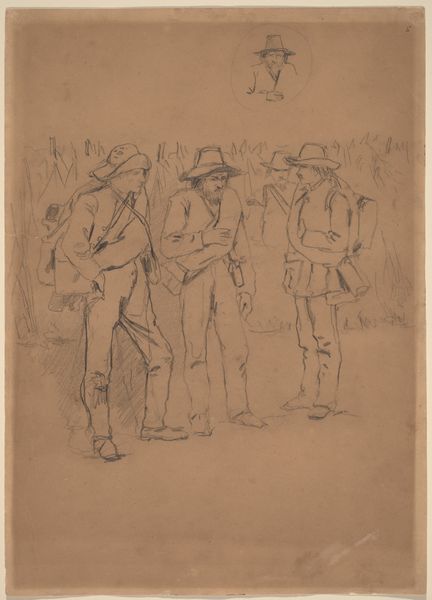
drawing, print, etching
#
portrait
#
drawing
# print
#
etching
#
etching
#
figuration
#
realism
Dimensions: height 264 mm, width 207 mm, height 290 mm, width 234 mm
Copyright: Rijks Museum: Open Domain
Editor: This is "Carabinieri à Rome" by Etienne Bosch, created before 1931. It’s an etching, so a type of print. It's... intriguing. The two figures seem almost ghostly, like memories fading. What do you see in this piece? Curator: Well, immediately, the figures' uniforms trigger cultural associations – authority, tradition, perhaps even a hint of pageantry. But consider, why *these* figures, at *this* time? Are they symbols of order and stability, or something else entirely? Look closer: do the faces strike you as heroic? Or is there a certain... blankness? Editor: Blankness, definitely. Their faces are quite generic, almost like masks. The feathery plumes on their hats make me think of peacocks, associated with pride… but there is something sad here, perhaps their pride is brittle. Curator: The 'mask-like' quality resonates strongly. We often imbue uniforms with meanings exceeding the individuals wearing them. The Carabinieri –symbols of Rome itself - become icons here. Consider the cultural memory: what did uniformed figures *mean* to viewers then, and what might they signify today? Has that symbolism shifted? Editor: That's a powerful point! Back then, it could be perceived as patriotic imagery, maybe a sense of security. Now, perhaps more complicated – a symbol of state power and the ever-present tension between order and freedom. I had not considered how etching these in an ‘unfinished’ way adds to the ghostliness. Curator: Indeed. By studying such details we can grasp not only the conscious intention but also the undercurrents – the collective anxieties and aspirations – that shaped this work. This is the beauty of iconography; that even the most seemingly straightforward images can open into rich and complex layers of meaning. Editor: It's amazing to consider all these different angles! It makes the etching so much richer than I first thought. Curator: Exactly! And that's what keeps us coming back to art –the endless potential for new understandings.
Comments
No comments
Be the first to comment and join the conversation on the ultimate creative platform.
